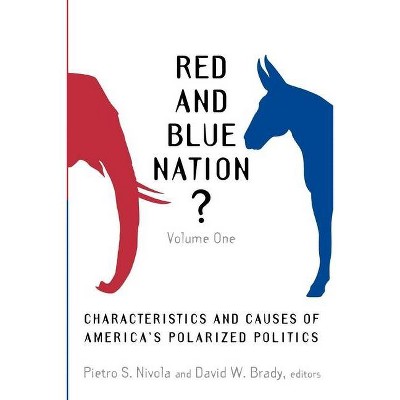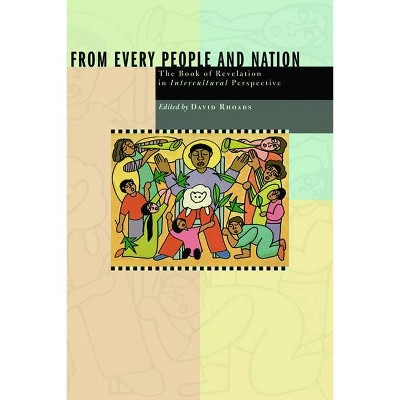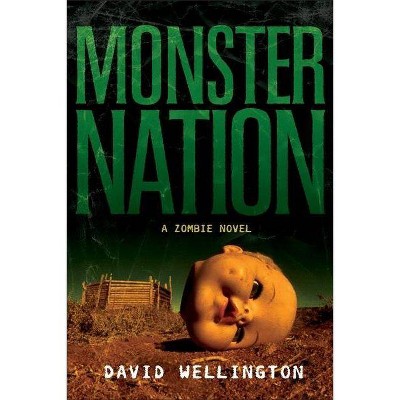Red and Blue Nation? - by Pietro S Nivola & David W Brady (Paperback)

Similar Products
Products of same category from the store
AllProduct info
<p/><br></br><p><b> About the Book </b></p></br></br><p>A Brookings Institution Press and the Hoover Institution publication<br> <p>Analysts and pundits increasingly perceive a widening gulf between red states and blue states. Yet the research to support that perception is scattered and sometimes difficult to parse. America's polarized politics, it is said, poses fundamental dangers for democratic and accountable government. Heightened partisanship is thought to degrade deliberation in Congress and threaten the integrity of other institutions, from the courts to the media. But, how deep do the country's political divisions actually run? Are they truly wreaking havoc upon the social fabric? Has America become a house divided? This important new book, Red and Blue Nation?, gets to the bottom of this perplexing issue. <p/>The first of two volumes cosponsored by Brookings and the Hoover Institution carefully considers the extent to which polarized views among political leaders and activists are reflected in the population at large. It pays particular attention to factors such as the increased influence of religion and the changing nature of the media. The authors show that while the severity of the country's culture wars is often overstated, significant fissures have opened. In Red and Blue Nation? leading journalists and scholars combine their different insights to enrich our understanding of the issue, offering thoughtful analyses of the underlying problems. This comprehensive and accessible discussion of the polarization debate will be an essential resource for policymakers, scholars, and anyone interested in the health of American public discourse. <p/>Contributors include Alan I. Abramowitz (Emory University), David W. Brady (Hoover Institution), Peter Beinart (The New Republic), Sarah A. Binder (Brookings Institution), James Campbell (State University of New York at Buffalo), Carl Cannon (National Journal), E.J. Dionne, Jr. (Brookings Institution), Gregg Easterbrook (Brookings Institution), Thomas B. Edsall (Washington Post), Morris P. Fiorina (Hoover Institution), William A. Galston<br><p/><br></br><p><b> Book Synopsis </b></p></br></br><p>Analysts and pundits increasingly perceive a widening gulf between red states and blue states. Yet the research to support that perception is scattered and sometimes difficult to parse. America's polarized politics, it is said, poses fundamental dangers for democratic and accountable government. Heightened partisanship is thought to degrade deliberation in Congress and threaten the integrity of other institutions, from the courts to the media. But, how deep do the country's political divisions actually run? Are they truly wreaking havoc upon the social fabric? Has America become a house divided? This important new book, Red and Blue Nation?, gets to the bottom of this perplexing issue. The first of two volumes cosponsored by Brookings and the Hoover Institution carefully considers the extent to which polarized views among political leaders and activists are reflected in the population at large. It pays particular attention to factors such as the increased influence of religion and the changing nature of the media. The authors show that while the severity of the country's culture wars is often overstated, significant fissures have opened. In Red and Blue Nation? leading journalists and scholars combine their different insights to enrich our understanding of the issue, offering thoughtful analyses of the underlying problems. This comprehensive and accessible discussion of the polarization debate will be an essential resource for policymakers, scholars, and anyone interested in the health of American public discourse. Contributors include Alan I. Abramowitz (Emory University), David W. Brady (Hoover Institution), Peter Beinart (The New Republic), Sarah A. Binder (Brookings Institution), James Campbell (State University of New York at Buffalo), Carl Cannon (National Journal), E.J. Dionne, Jr. (Brookings Institution), Gregg Easterbrook (Brookings Institution), Thomas B. Edsall (Washington Post), Morris P. Fiorina (Hoover Institution), William A. Galston (Brookings Institution), Hahrie C. Han (Wellesley College), Gary C. Jacobson (University of California, San Diego), Andrew Kohut (Pew Research Center for The People & The Press), Matthew Levendusky (Stanford University), Thomas E. Mann (Brookings Institution), Diana C. Mutz (University of Pennsylvania), Pietro S. Nivola (Brookings Institution), Tom Rosenstiel (Project for Excellence in Journalism), and Alan Wolfe (Boston College).</p><p/><br></br><p><b> Review Quotes </b></p></br></br><br><P><br><br><P>"the terms 'gridlock' and 'polarization' have become staples of the political vocabulary--so much so that the reality behind them often goes unexamined. Remedying that oversight is what motivates the unusual collaboration of two think tanks, the Hoover Institution at Stanford University and the Brookings Institution in Washingtion, in a volume entitled 'Red and Blue Nation? Characteristics and Causes of America's Polarized Politics." --David Broder, "Washington Post", 11/2/2006<br><br><P>"A distinguished group of academicians, journalists and pollsters successfully combine the methodological rigor of political science research with the readability of first-rate journalism in the first volume of "Red and Blue Nation?."" --Henry B. Sirgo, McNeese State University, "American Review of Politics"<br><br><P>"The analysis is perceptive and the debate vigorous in this wide-ranging study of polarization. Highly recommended." -- "CHOICE", 7/1/2007<br><br><P>"Well worth reading. It's both an analysis of and, in its careful presentation of empirical data, a possible antidote to polarization." --Matthew Continetti, "New York Times"<br><p/><br></br><p><b> About the Author </b></p></br></br><p> <b>Pietro S. Nivola </b> is a vice president of the Brookings Institution, where he is the director of Governance Studies. Among his previous books are <i>Tense Commandments: Federal Prescriptions and City Problems</i> (Brookings, 2002) and <i>Agenda for the Nation</i>, coedited with Henry J. Aaron and James M. Lindsay (Brookings, 2003). <b>David W. Brady</b> is deputy director and senior fellow at the Hoover Institution; the Bowen H. and Janice Arthur McCoy Professor at the Stanford Graduate School of Business; and professor of political science in Stanford University's School of Humanities and Sciences. Among his previous books is <i>Revolving Gridlock: Politics and Policy from Jimmy Carter to George W. Bush</i>, coauthored with Craig Volden (Westview, 2005).</p>
Price History
Price Archive shows prices from various stores, lets you see history and find the cheapest. There is no actual sale on the website. For all support, inquiry and suggestion messagescommunication@pricearchive.us




















